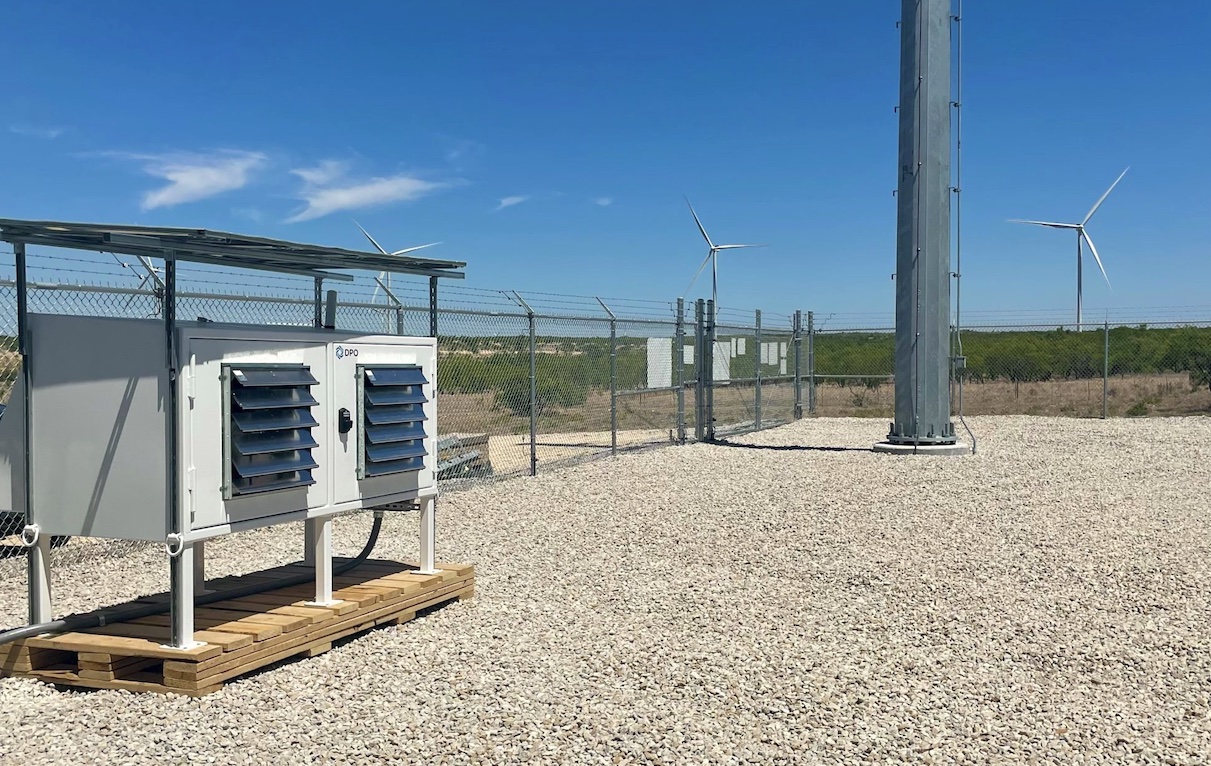Bitcoin mining could help spur more investment in renewable energy because the industry can use “stranded” energy from solar, wind or other forms of renewable electricity generation, argues Andrew Webber, chief executive officer of Digital Power Optimization.
In an interview with Forkast, Webber, the founder of the New York-based company that helps energy firms build crypto mining operations, said Bitcoin mining can help make renewable energy more profitable and “if you can make renewable energy more profitable to build, people will build more of it.”
The following Q&A had been edited for clarity and length.
Timmy Shen: Could you tell me more about your company and how you work with energy firms?
Andrew Webber: We use flexible data centers, Bitcoin mining or flexible AI (artificial intelligence) computing to deploy the assets and operations at energy sites where you generate power – whether that’s wind power, hydropower or solar power. We use some of that excess energy, or energy that would otherwise have been undervalued by the market or stranded in a remote location because there’s not enough transmission to get that power from one site to where it’s going to be used.
By deploying a flexible data center at these generation assets, they can govern how much power they’re using versus how much power they’re selling into the grid. It creates this really profitable off-take scenario for them where they can capture incremental value for their energy.
So we think of this entire ecosystem not necessarily as a separate industry. We think that the idea of Bitcoin mining flexible data centers is one that’s going to be picked up and utilized by the energy sector as a vertically integrated strategy – the same way they think about battery deployments at their sites, or green hydrogen production in the same way using excess available energy to electrolyze water and end up with hydrogen as a new fossil-free fuel.

Shen: How do you decide when you would like to turn off or turn on the computing power?
Webber: It’s really our partners’ decision, but we help them think through that.
The idea is that you can basically keep running your data center based on a certain price in the grid. If grid prices or your opportunity cost for selling that power exceeds what you can make by using it for your data center, you just turn the data center off and that power can be redirected into the grid.
I’ll use an example – the 2021 winter storm in Texas. There was a huge price spike because there was not enough generation. Everybody needed to turn their heaters on. There was this huge demand for more power but there wasn’t enough power. So grid prices went to like US$9,000 per megawatt hour, which is absolutely insane. And all Bitcoin miners turned off during that period because they didn’t want to operate when power prices were that high. They would rather turn their mines off and sell their power into that elevated market so they make more money. But the grid also gets the extra power that it needs to offset some of those increased prices. So as a load-balancing mechanism for a given power grid, it’s a really powerful tool to help fit the demands that society needs.
Shen: How profitable is Bitcoin mining and what factors would miners consider when they decide when to turn off their machines?
Webber: The profitability of Bitcoin mining is set mostly by spot price and the amount of competition and network difficulty. Those things move together.
Those two elements are really key drivers in deciding when and how a flexible data center might operate relative to grid prices.
Shen: Is there a certain threshold of Bitcoin price that you would suggest to your clients to turn off the machines?
Webber: It depends on what difficulty does in response to spot price.
If Bitcoin [price] goes to a million [dollars], you might think miners are going to make a bunch of money. That’s true for a little while. But competition will come in and you’ll go back to making the same [amount] you’re making today.
If Bitcoin goes down to US$10,000 or $5,000, it will force a lot of miners off that network because they’re no longer profitable. They can’t pay their power bills. So when they turn off, those who are surviving start making more and more Bitcoin. There’s a balancing effect.
It matters what Bitcoin spot price does in the short term but over the long term, the network sort of self-adjusts. With the best energy sites or the lowest cost of production, you will outlast all of your competition and keep mining profitably even beyond that [Bitcoin] spot price decline.
So there is no magic number, there is no level at which this just becomes unfeasible. It’s all about understanding the relationship between this flexibility – the uptime that you get versus the cost of your power versus the profitability of operating.

Shen: Lots of miners struggled last year mainly due to low Bitcoin prices and high energy costs. Now Bitcoin is rising. How has the rising Bitcoin price affected the mining industry?
Webber: There’s some modest uptick in profitability, but it also changes the cost of the equipment.
The entry cost to participate in this market also changes because again, the equipment prices move as well as the profitability and the cost of energy. There are several different variables to determine how much money you can make. So it really hasn’t changed that much in the grand scheme of things.
I do think that Bitcoin trending upward slightly is a better market environment than Bitcoin trending downward quickly. There’re investors that are coming back into the space. There’s a little more comfort with people assuming it’s not just going to go away tomorrow.
Movement in Bitcoin spot price matters less to those miners that are doing this in an institutional way. If you buy equipment slowly over time, you don’t really care that much about the fluctuations in Bitcoin spot price because the equipment is always sort of priced to reflect the current day’s reality about future expectations.
So again, long story short, it does matter. It just doesn’t matter as much as you might think.
Shen: How do you convince your clients to partner you? What are the opportunities and challenges the crypto mining industry faces at the moment, and why should the energy sector pay attention and get into Bitcoin mining?
Webber: The regulatory overlay is a critical one, even more so than economic returns. The ability to soak up excess power at their generation sites is something that’s really appealing to energy firms once we explain it to them.
I think the lack of regulatory clarity has put a slowing, dampening effect on this space, especially here in the U.S. It is an attractive place to do it because there is a lot of excess power and we’re putting up more renewable power every day and there’s nowhere for it to go.
The regulatory component of all of this is the last real piece where these big energy companies, which are also heavily regulated in their own industry. Even outside of Bitcoin regulation, there’s regulation in the power sector, which is very critical to these companies’ operations, and they don’t want to jeopardize their relationship with their energy regulators.
What will happen over the next five or 10 years? I think more Bitcoin mining will be pushed onto green assets. I think it will be done by larger and larger institutions in a different sort of mindset than Bitcoin-first. It’s going to be energy-first. The Bitcoin data center is just a tool that’s used by the energy sector.
Shen: You’ve said before on social media that Bitcoin mining could help with energy transition. Could you explain?
Webber: I go to these energy conferences and there’s an awareness among energy professionals that the energy transition from fossil fuels to green energy is extremely complicated. It’s not just a matter of building more wind or building more solar.
If you can make renewable energy more profitable to build, then people will build more of it. If you can use flexible data centers as another strategy to make renewable energy assets more profitable by helping the developers and the owners deploy these data centers there, their profit margins go up, which means they can build more renewable energy assets. You operate them in a way that’s more efficient and more productive by using every last electron that’s created instead of just wasting it because there’s nowhere for it to go.
There’s a huge amount of curtailed energy where they literally turn off the solar farm or they turn off the wind farm because they have more power than they need and there’s nowhere for it to go.
Over the next decade, I believe that there will be more renewable energy created and driven by Bitcoin mining than people understand. I think it will be an important tool to really make renewable assets more viable than they otherwise would have been.






